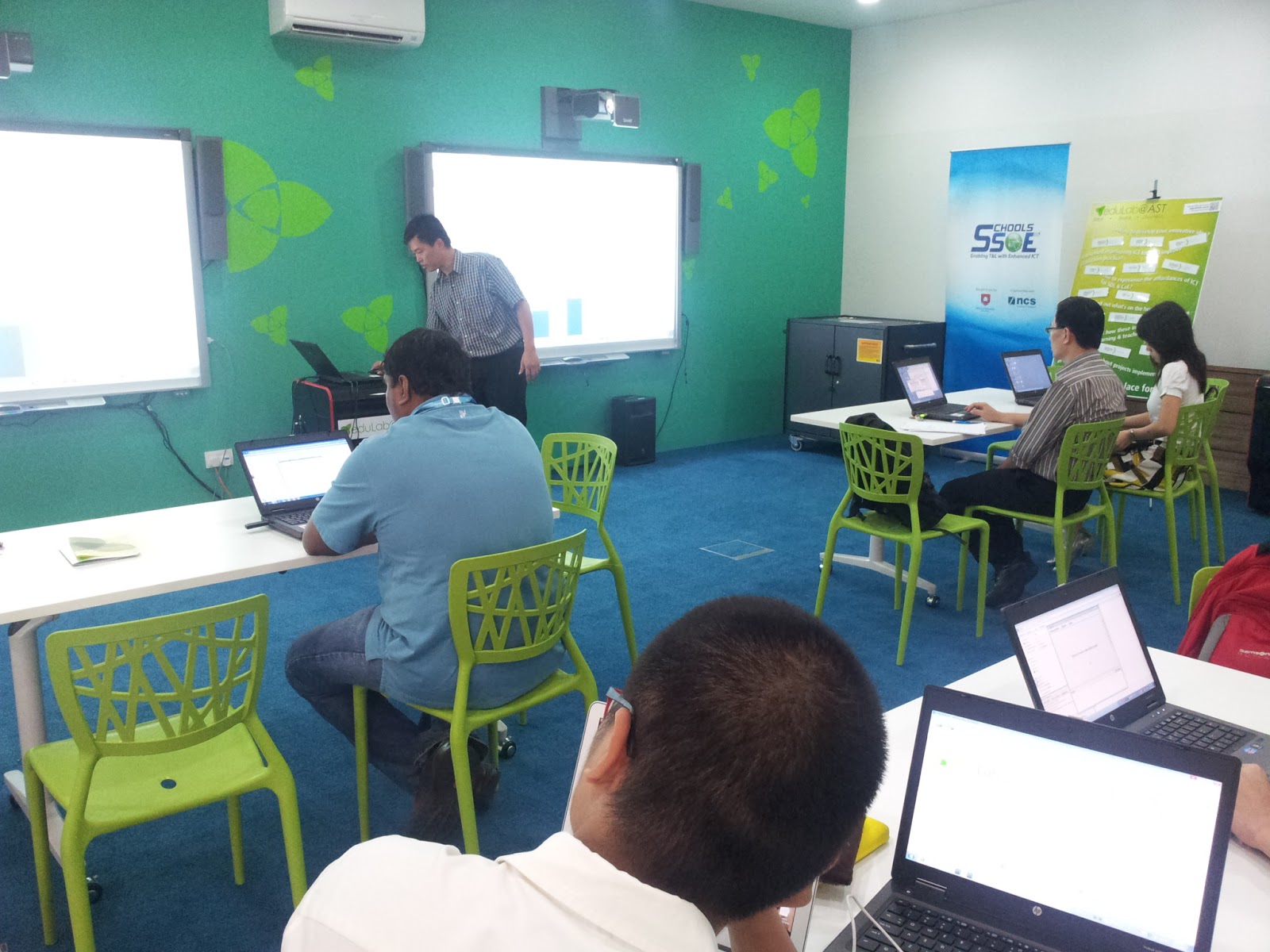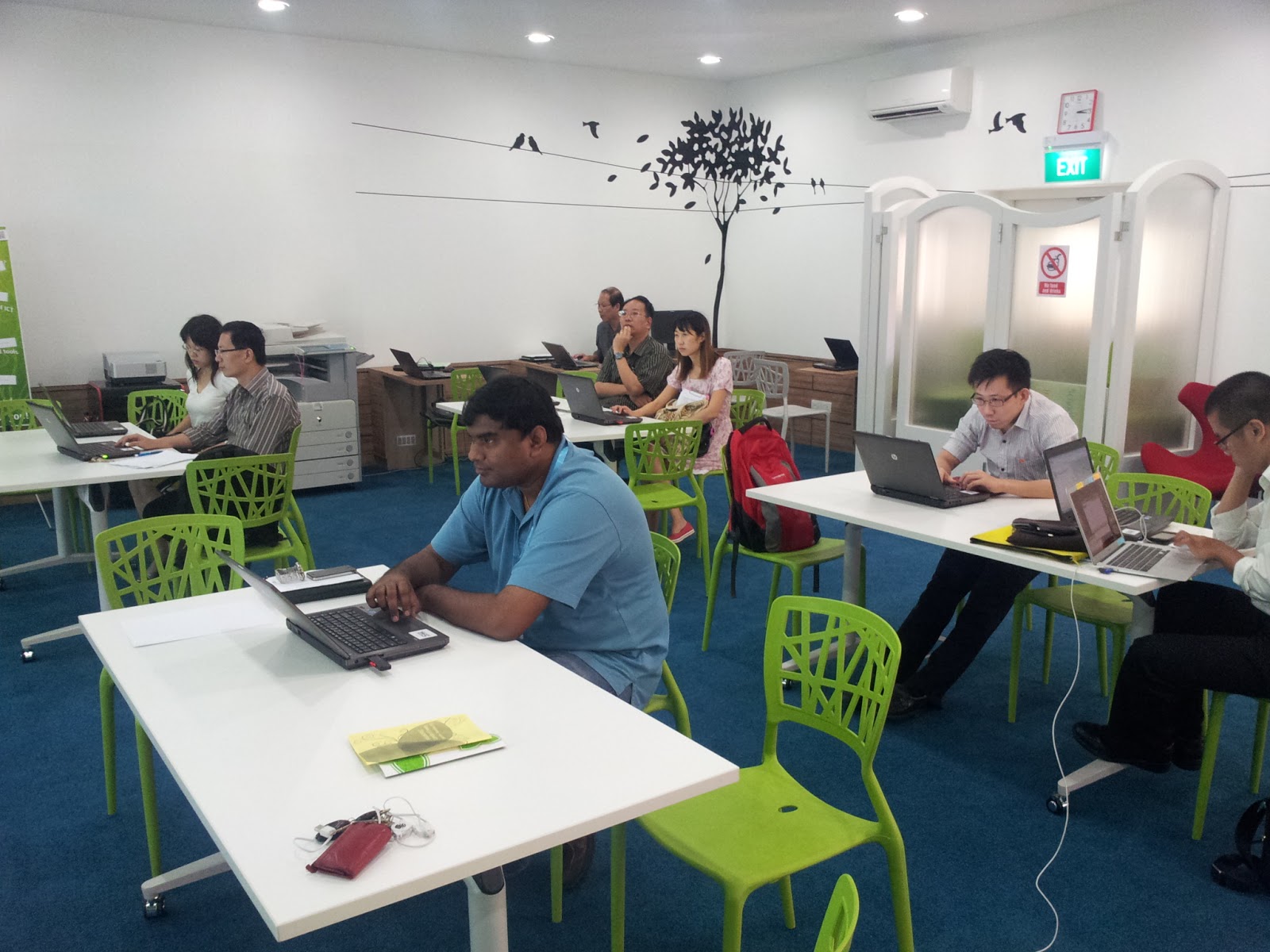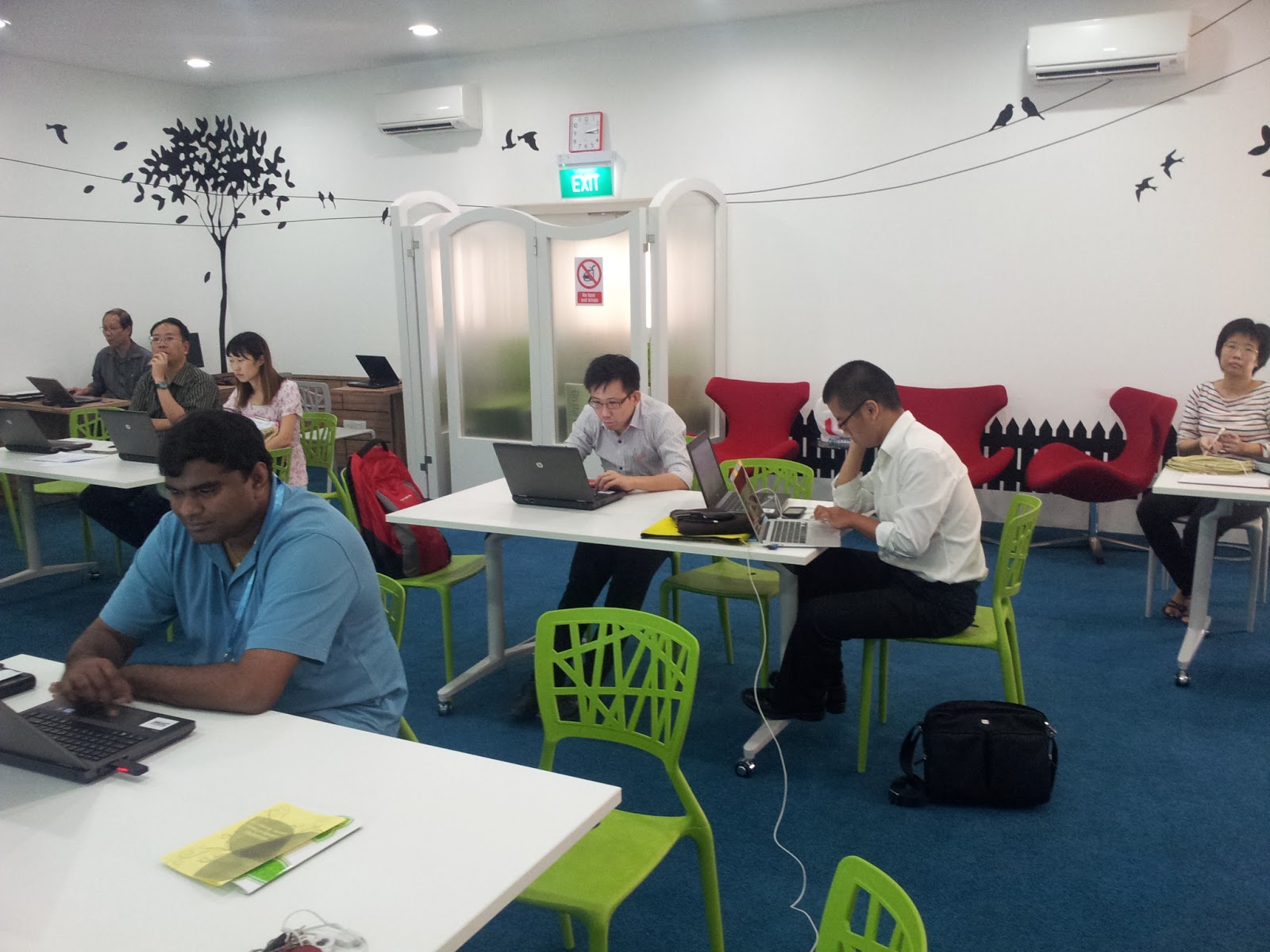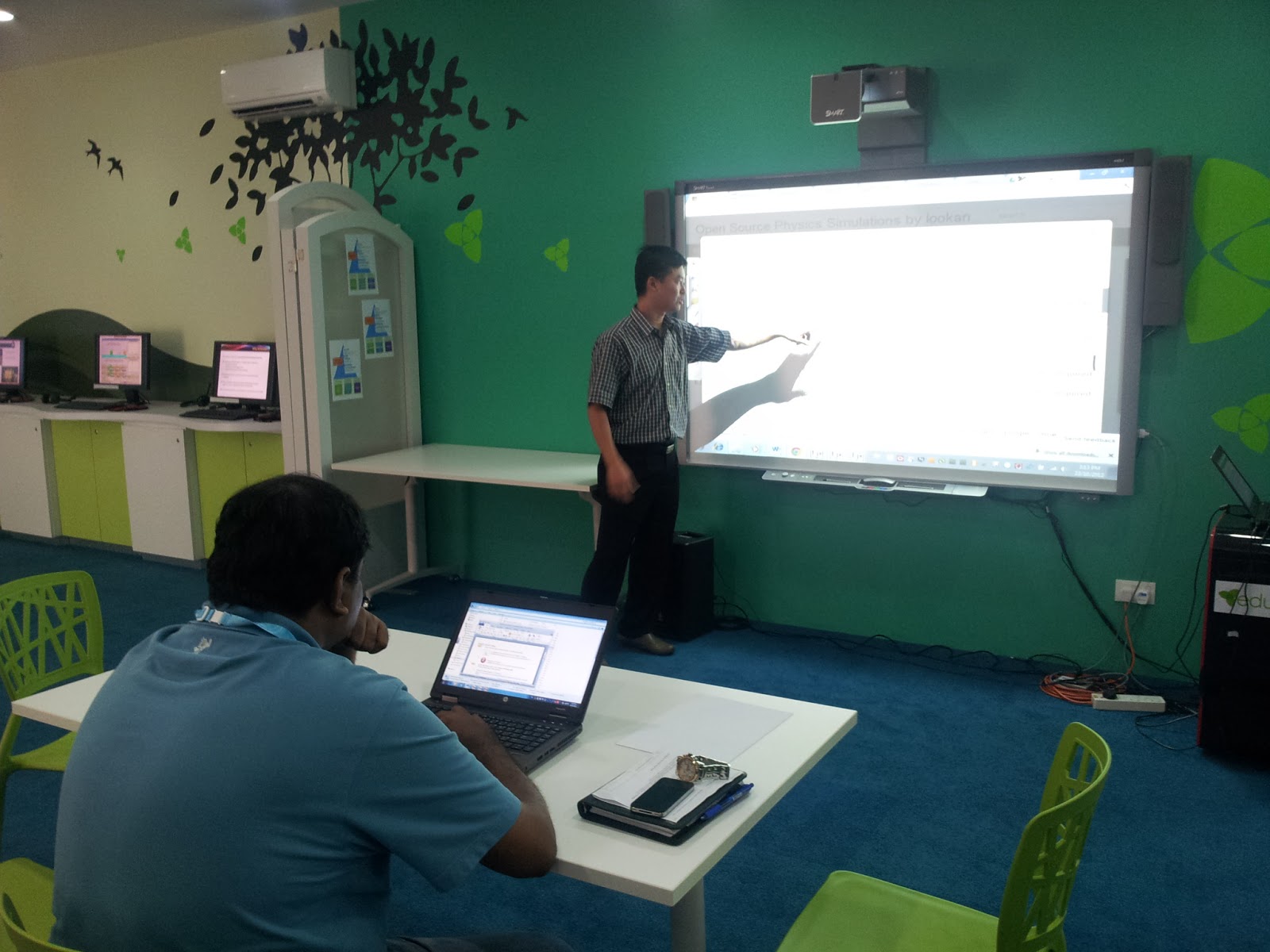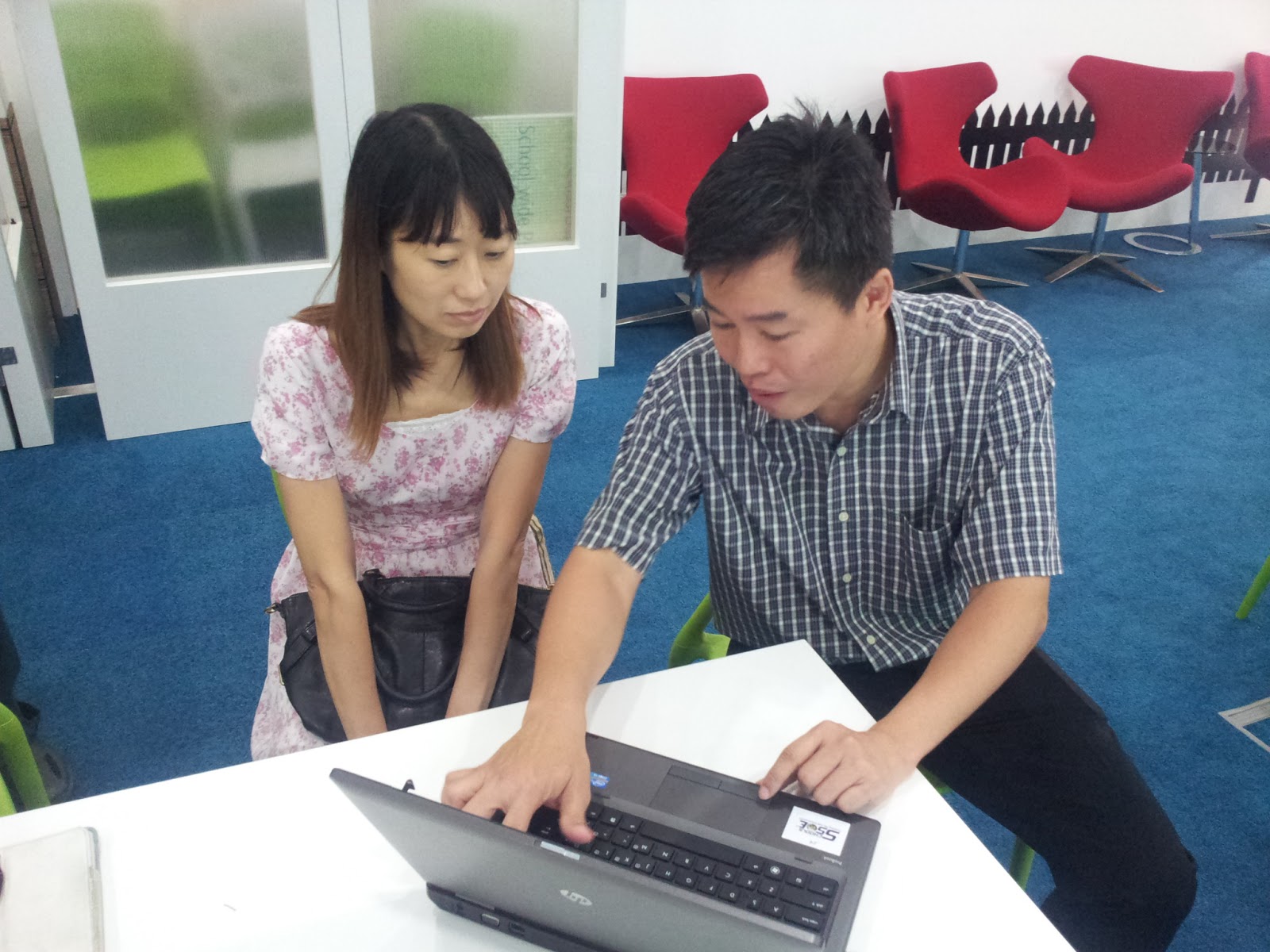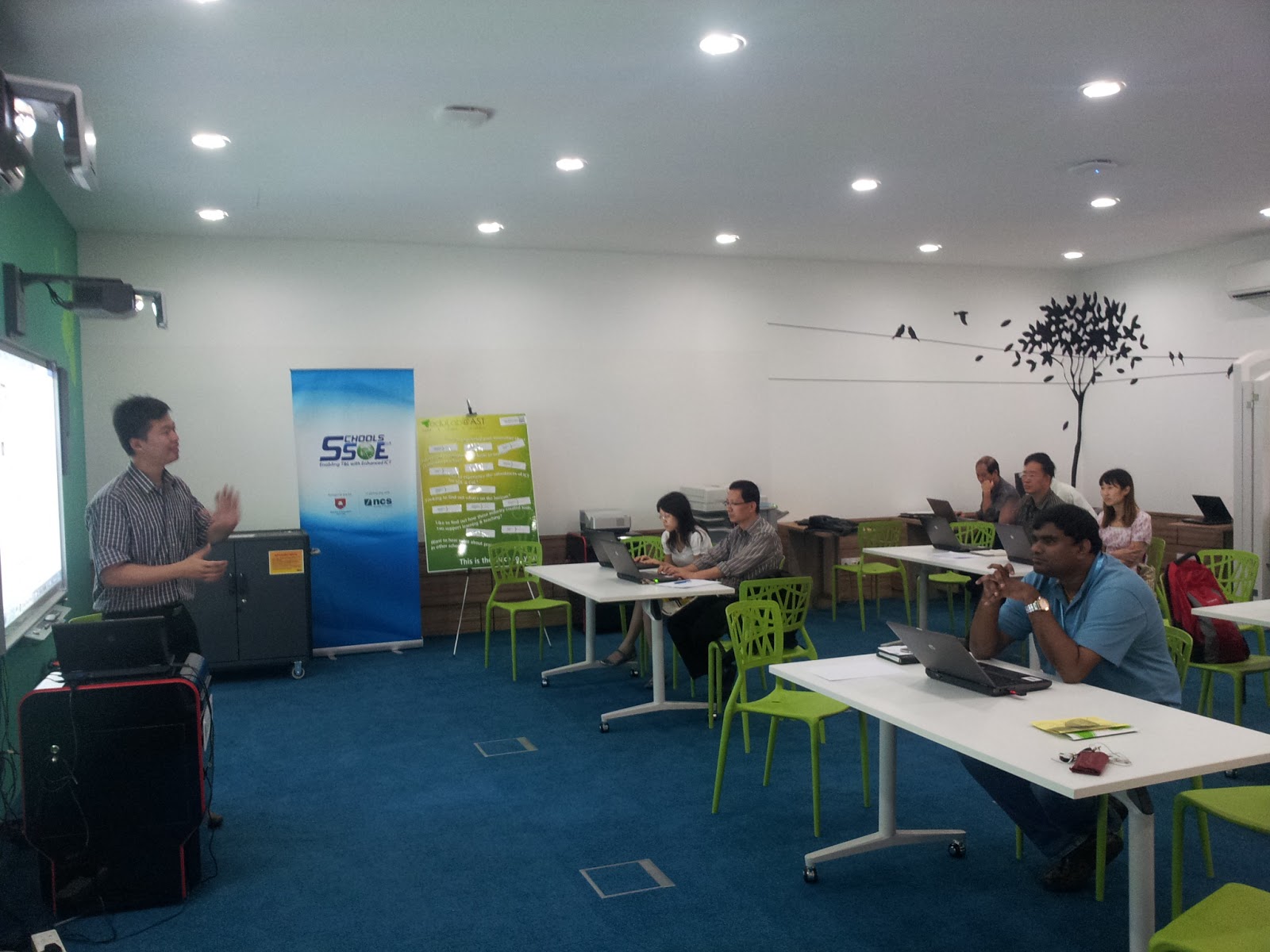http://weelookang.blogspot.sg/2012/08/trasi-course-code-70388-gravity-physics.html
Briefing Document: TRASI Course Code 70388 - Gravity: Physics by Inquiry
1. Overview
This document summarizes the key aspects of the TRASI (Training and Resources System for the Advancement of Instructional Practices) course, specifically course code 70388, titled "Gravity – Physics by Inquiry." The course focuses on using computer simulations, particularly those created with Easy Java Simulation (EJS), to enhance the teaching and learning of gravity concepts in physics. The target audience is primarily physics teachers, although it is open to all, with a preference for those teaching at the ‘A’ level. The course blends discussion with hands-on activities, aiming to equip educators with the ability to use these simulations effectively in their classrooms.
2. Key Themes and Ideas
- Open Source Physics and Easy Java Simulation (EJS): The course heavily promotes the use of open-source physics simulations created with EJS. EJS is highlighted as a free authoring toolkit, allowing educators to create and customize simulations for their specific teaching needs. The document mentions: "The Open Source Physics community using Easy Java Simulation (Esquembre, 2004) has created hundreds of computer models (simulations) that could be finer customized (Wee & Mak, 2009) to the Singapore syllabus for more targeted productive activities." This emphasis on open-source and customizable resources suggests a desire to make physics education more accessible and tailored to local contexts.
- Guided Inquiry Learning: The course emphasizes guided inquiry learning using the simulations. The goal is not just to present information but to facilitate student exploration and understanding of physics concepts. The workshop will: "share the 4 computer models’ features for guided inquiry learning and existing worksheets designed by teachers in school."
- 5E Instructional Strategy: A key objective is for participants to design their own worksheets using the 5E instructional strategy (Engage, Explore, Explain, Elaborate, Evaluate). This pedagogical framework aims to structure learning experiences for deeper engagement and understanding. The course aims to make teachers "able to design worksheets with 5E instructional strategy on one of the models."
- Experiential Learning: The course is underpinned by experiential learning theory (Dewey, 1958; Kolb, 1984). The simulations are viewed as tools that provide virtual experiences, allowing students to engage directly with concepts that might be difficult to observe or manipulate in a traditional classroom setting.
- Focus on Gravity Concepts: The specific focus of the course is on teaching gravity concepts, utilizing four pre-made EJS simulations:
- Geostationary orbit model: Exploring satellite orbits.
- Two mass model: Illustrating gravitational and potential lines in a 1-D system.
- Earth-Moon model: Studying the escape velocity concept.
- Kepler’s 3rd Law system model: Examining orbital periods of planets.
- Teacher as Designer: The course empowers teachers to become active designers of learning activities, going beyond passive consumers of educational materials. This is evidenced by participants designing their own worksheets and the following statement, "Allow teachers to design productive experiential activities around the investigative data collection on one of the 4 computer models."
- Importance of Well-Designed Simulations: There's a recognition of the need for well-designed, engaging simulations. Student feedback indicates a desire for visual and audio enhancements, and even gamification, to increase interactivity and engagement: "A good suggestion surface is to make the “program[simulation] designed as a game, thereby making it more interactive."
- Student-Centered Learning: The student feedback cited highlights the benefits of this approach, such as active learning, critical thinking, and a sense of accomplishment, as opposed to passive absorption of information. For example: "The lesson was fun and makes us think instead of just listen[ing] to teacher and remember[ing] whatever the teacher said.”
3. Key Facts and Information
- Course Details:Course Title: TRASI course code 70388 Gravity – Physics by Inquiry
- Instructors: Wee Loo Kang and Lye Sze Yee
- Facilitator: YU Yoong Kheong
- Date: October 23, 2012
- Time: 1500-1730 pm
- Venue: eduLab@AST 2 Malan Road Level 4 eduLab Room
- Target Audience: Physics teachers (preference for 'A' level).
- Technology: Java-based simulations (EJS).
- Course Objectives:Participants will be aware of the features and uses of 4 gravity-physics computer models.
- Participants will design worksheets with the 5E instructional strategy using one of the computer models.
- Computer Models Used:Geostationary orbit model
- Two mass model
- Earth-Moon model
- Kepler's 3rd Law system model
- EJS Libraries and Resources: Multiple links to EJS simulation libraries are provided, including those from NTNU, compadre.org, and a personal collection by Wee Loo Kang.
- Award: The project was recognized with the 2012 MOE Innergy (HQ) GOLD Award. This award highlights the importance and innovation of the project.
4. Quotes Highlighting Key Ideas
- On Active Learning: "…[It] is an eye opener...[we] don’t usually get to learn with virtual learning environment…and it makes learning fun and interesting”.
- On Inquiry: "These kinds of lesson force us to think critically. It makes us look at the results, analyze and then find the trend within, which is a really good way to learn independently."
- On Simulation's Benefit: “Such vlab[virtual lab] lesson effectively utilizes the IT[information technology] resources to enhance lessons, making physics lessons less dry."
- Need for better activity design: "The activity worksheet did not generate much thinking and concept understanding, just simply presents a set of values to copy to get the answers”.
- Appreciation: “I[student] really thank you for spending time coming up with this program[simulation]. You are really an educator who cares and dares to try new things. Thanks! Hope you can come up with even better programs so that they can empower students in physics subject.”
5. Pedagogical Underpinnings
The course draws from several established educational approaches:
- Experiential Learning: Emphasizing learning through experience and reflection.
- Physics by Inquiry: A student-centered approach that emphasizes exploration and investigation.
- Modeling Instruction: Focuses on building mental models through active engagement.
6. Intended Benefits for Teachers
The program aims to enable teachers to create effective learning activities using the provided simulations. This approach should allow teachers to design more productive and student-centered experiential activities.
7. Further Exploration
The document includes links to research papers and other resources for further exploration, including links to the EJS libraries and a long list of projects and presentations by the instructors and collaborators, indicating a rich history of work in this area.
8. Conclusion
The TRASI course 70388 on "Gravity – Physics by Inquiry" is a good example of a program designed to leverage the power of technology and open-source resources to transform physics education. It focuses on guided inquiry learning, encourages teachers to be active curriculum designers, and ultimately aims to create more engaging and effective learning experiences for students through simulation-based learning. The emphasis on the 5E instructional model and experiential learning suggests a commitment to student-centered pedagogy.
TRASI course code 70388 Gravity – Physics by Inquiry

1. Wee Loo Kang
2. Lye Sze Yee
Facilitator: YU Yoong Kheong
Venue: eduLab@AST 2 Malan Road Level 4 eduLab Room
Date: 23 Oct 2012
Time: 1500-1730 pm
Workshop: Comprises both discussion and activities
Subject Area: Physics
Grade Level: PSLE, O and A level
 |
| updated: TRASI course code 70388 Gravity – Physics by Inquiry https://traisi.moe.gov.sg/Utility/UT_Default.asp |
 |
| TRASI course code 70388 Gravity – Physics by Inquiry https://traisi.moe.gov.sg/Utility/UT_Default.asp |
http://iresearch.edumall.sg/iresearch/slot/u110/edulab/html/images/EA.pdf
| Gravity – Physics by Inquiry | ||||||
| (70388) | ||||||
| Course Description | Org Agency | Duration | Classes Available (Please Click on a Date) | Max Class Size | Course/ Class Fee | Comments |
| Objective: By the end of the session, participants should be able to: (1) aware of the features and possible usage of the 4 computer models (2) able to design worksheets with 5E instructional strategy on one of the models. Preferred Participants: Physics Teachers Other Requisites: Nil |
Media Dsgn & Tech For Learning,ETD,MOE | 2.5 Hr(s) | 23/10/2012-23/10/2012 (PM Session) 06/11/2012-06/11/2012 (PM Session) 06/11/2012-06/11/2012 (PM Session) |
 30 30 30 30 |
 \(0.00 \(0.00
|
undefined |
eduLab@AST Programmes Working Group Programme Proposal
Gravity – Physics by Inquiry
The Open Source Physics community using Easy Java Simulation (Esquembre, 2004) has created hundreds of computer models (simulations) that could be finer customized (Wee & Mak, 2009) to the Singapore syllabus for more targeted productive activities.
We will share the 4 computer models’ features for guided inquiry learning and existing worksheets designed by teachers in school.
Teachers in groups will also design their own worksheets using the 5E instructional strategy that they can use in their classroom.
Participants interested in using the free authoring toolkit called “Easy Java Simulation” can register for Physics Easy Java Simulation (Part 1 & 2) TRASI Code: 70391 instead.
Our work include:
eduLab project: NRF2011-EDU001-EL001 Java Simulation Design for Teaching and Learning
2012 MOE Innergy (HQ) GOLD Award “Gravity-Physics by Inquiry”.
Objectives:
By the end of the session, participants should be able to:
(1) aware of the features and possible usage of the 4 computer models
(2) able to design worksheets with 5E instructional strategy on one of the models.
15 min: Introduction of Easy Java Simualtion (EJS) toolkit and the Digital Libraries.
download: EJS_4.3.7_120920.zip
Libraries:
- http://www.phy.ntnu.edu.tw/ntnujava/ hundreds of EJS simulations, JDK applet etc.
- http://www.compadre.org/osp/search/browse.cfm?browse=gsss hundreds of EJS simulations
- http://www.phy.ntnu.edu.tw/ntnujava/index.php?board=28.0 my own library require login to download jar files, public can view and use using browser.
- https://sites.google.com/site/lookang/ eduLab simulations open access.
- https://sites.google.com/a/moe.edu.sg/physicsalevel/gravitational-field currently require login google moe.edu.sg, i am trying to build a lesson package on gravity-physics with all icon users.
- https://sites.google.com/a/moe.edu.sg/physicshandbook/ currently require login google moe.edu.sg Physics Handbook with ETD-AST-CPDD-Schools.
30 min: Sharing in depth of 4 gravity-physics computer models (computer models provided, writeup of innergy award worksheets for inquiry etc)
- computer models
| Geostationary orbit model (Wee, 2012a; Wee & Esquembre, 2010) derived from Francisco’s original work (Esquembre, 2010a) |
| Two mass model (Wee, Duffy, & Hwang, 2012a) derived from Andrew’s original work (Duffy, 2009) showing a 2 mass system with gravitational and potential lines in 1 dimension |
- ejs_GFieldandPotential1Dv7EarthMoon.jar (1579k)
- ejs_EarthAndSatelite.jar (2456k)
- ejs_KeplerSystem3rdLaw03.jar (2782k)
- ejs_GField_and_Potential_1D_v7wee.jar (1094k)
- worksheet are 2011 version from YJC here in ICT connection portal lesson examples.
- Virtual Laboratory of Kepler's Third Law Solar System Model Download All Resources required edumall2.0 login
- Virtual Laboratory of Geostationary Satellite around Earth Model Download All Resources required edumall2.0 login
- Virtual Laboratory Gravitational Field & Potential of Earth and Moon Download All Resources required edumall2.0 login
- Virtual Laboratory Gravitational Field & Potential of 2 Mass Model Download All Resources required edumall2.0 login
- Writeup:
- http://weelookang.blogspot.sg/2012/01/gravity-physics-by-inquiry-2012-innergy.html
- https://ideas.moe.gov.sg/InnDisplay.aspx?award=6d088553b5b5ebbb75df36e9d9ebfdc1
- Gravity - Physics by Inquiry, GOLD Innergy Award: 2012, 03 May 2012, 0940-1000
- 模拟软件让课堂“动”起来(2012-03-30)
- Short article on Innergy Project for ASPIRE magazine (May 2012)
- lift posters Innergy (HQ) Awards 2012 Gravity Physics by Inquiry
- Innergy award GOLD 2012
- 1st Physics Subject Chapter Meeting 2012 23 Feb
- Gravity-Physics by Inquiry 2012 Innergy Award Submission
15 min: Study the existing worksheets designed by school teachers
30 min: in Groups, design an worksheet with the 5E instructional strategy on one of the 4 models
 |
| taken from http://sisltportfolio.missouri.edu/ssg392/bscs5eexecsummary.pdf |
30 min: Participants sharing their ideas on the worksheets designed using 5E instructional strategy
15 min: Upload to NTNU Java Virtual Lab the worksheets in progress and Closing discussions by particpants with presenters
NTNU:
- Ejs Open Source Gravitational Field & Potential of Earth and Moon Java Applet required NTNU java login
- Ejs Open Source Gravitational Field & Potential of 2 Mass Java Applet required NTNU java login
- Ejs Open Source Geostationary Satellite around Earth Java Applet required NTNU java login
- Ejs Open Source Kepler 3rd Law System Model Java Applet required NTNU java login
icon https://sites.google.com/a/moe.edu.sg/physicsalevel/gravitational-field
Relevant pedagogical and theoretical underpinning(s)
Theory:
Experiential learning (Dewey, 1958; Kolb, 1984) with computer model (Wolfgang Christian, Esquembre, & Barbato, 2011; Wee, 2012b)
Literature include:
Open Source Physics OSP research:(M. Belloni, Christian, & Brown, 2007; Mario Belloni, Christian, & Mason, 2009; Brown & Christian, 2011; W. Christian, Belloni, & Brown, 2006; Wolfgang Christian, et al., 2011; Wolfgang Christian & Tobochnik, 2010; Esquembre, 2004; Hwang & Esquembre, 2003; Wee, 2010, 2012a; Wee, Esquembre, & Lye, 2012; Wee & Mak, 2009)
Physics Education Technology PhET research:(W. K. Adams, 2010; Wendy K. Adams, Paulson, & Wieman, 2008; Finkelstein et al., 2005; /Documents%20and%20Settings/Temp/Desktop/Forms_eduLab@AST%20Educatorswee2.docx#_ENREF_17" style="color: rgb(136, 136, 136);">K. Perkins et al., 2006; K. K. Perkins, Loeblein, & Dessau, 2010; PhET, 2011; Weiman & Perkins, 2005; C. E. Wieman, Adams, Loeblein, & Perkins, 2010; Carl E. Wieman, Adams, & Perkins, 2008; Carl E. Wieman, Perkins, & Adams, 2008)
Strategy include :
Physics by Inquiry (McDermott, Shaffer, & Rosenquist, 1995; MOE, 2012; Wee, Lee, & Goh, 2011)
Modeling Instruction (Jackson, Dukerich, & Hestenes, 2008)
Student outcome:
In my paper (Wee, 2012b, p. 306), evidence on student learning outcomes include:
“…[It] is an eye opener...[we] don’t usually get to learn with virtual learning environment…and it makes learning fun and interesting”.
“The lesson was fun and makes us think instead of just listen[ing] to teacher and remember[ing] whatever the teacher said”.
“It makes learning much more interesting and fun. It makes us want to learn and find out more about the topic”.
Need experience to understand
“…it [this lab] lets me figure out the concepts rather than just listen[ing] and believing what is taught without understanding”.
“Normally people would have to experience any physics concepts themselves through hands[-]on to really remember concepts. Lectures on the other hand may not be effective since maybe what the lecturer is bringing through us is unclear, and thus practical lessons to learn concepts is a great learning deal”.
Simulation can support inquiry learning and thinking like real scientist
“These kinds of lesson force us to think critically. It makes us look at the results, analyze and then find the trend within, which is a really good way to learn independently. It also gives us confidence and a sense of accomplishment when the conclusions we arrive at are correct.”
“Such vlab[virtual lab] lesson effectively utilizes the IT[information technology] resources to enhance lessons, making physics lessons less dry. Besides, by identifying trends in values first hand, I can remember it easier rather than via lecture notes and slides”
Need for strong inquiry learning activities
“The activity worksheet did not generate much thinking and concept understanding, just simply presents a set of values to copy to get the answers”.
“It [virtual lab] helps hasten the process of learning but the exchange of data [in the worksheet activities] is troublesome”.
Need for testing and well designed simulation (N. D. Finkelstein, et al., 2005)
Some students suggest visual and audio enhancements like “better quality so that the simulations could be more interesting and appealing” and “add sound effects”.
A good suggestion surface is to make the “program[simulation] designed as a game , thereby making it more interactive. At the end a table can be provided and it would provide us[students] with the values. From there, we do analysis”.
This suggestion has inspired us to design ‘C Game for concept testing’ in earlier part III.
“I[student] really thank you for spending time coming up with this program[simulation]. You are really an educator who cares and dares to try new things. Thanks! Hope you can come up with even better programs so that they can empower students in physics subject.”
“Thank you teachers for spending time to develop this app[lication] :)”
Intended benefit(s) to teachers
Allow teachers to design productive experiential activities around the investigative data collection on one of the 4 computer models.
Instructors
1. Wee Loo Kang
2. Lye Sze Yee
Venue: eduLab@AST 2 Malan Road Level 4 eduLab Room
Date: 23 Oct 2012
Time: 1500-1730 pm
Workshop: Comprises both discussion and activities
Subject Area: Physics
Grade Level: PSLE, O and A level
My research papers:
http://arxiv.org/a/wee_l_1
My CV:
http://weelookang.blogspot.sg/p/about-me-events-papers-awards.html
- Adams, W. K. (2010). Student engagement and learning with PhET interactive simulations. NUOVO CIMENTO- SOCIETA ITALIANA DI FISICA SEZIONE C, 33(3), 21-32.
- Adams, W. K., Paulson, A., & Wieman, C. E. (2008, July 23-24). What Levels of Guidance Promote Engaged Exploration with Interactive Simulations? Paper presented at the Physics Education Research Conference, Edmonton, Canada.
- Belloni, M., Christian, W., & Brown, D. (2007). Open Source Physics Curricular Material for Quantum Mechanics. Computing In Science And Engineering, 9(4), 24-31.
- Belloni, M., Christian, W., & Mason, B. (2009). Open Source and Open Access Resources for Quantum Physics Education. [Abstract]. Journal of Chemical Education, 86(1), 125-126.
- Brown, D., & Christian, W. (2011, Sept 15-17). Simulating What You See. Paper presented at the MPTL 16 and HSCI 2011, Ljubljana, Slovenia.
- Christian, W., Belloni, M., & Brown, D. (2006). An Open-Source XML Framework for Authoring Curricular Material. Computing In Science And Engineering, 8(5), 51-58.
- Christian, W., Esquembre, F., & Barbato, L. (2011). Open Source Physics. Science, 334(6059), 1077-1078. doi: 10.1126/science.1196984
- Christian, W., & Tobochnik, J. (2010). Augmenting AJP articles with computer simulations. American Journal of Physics, 78(9), 885-886.
- Dewey, J. (1958). Experience and nature: Dover Pubns.
- Esquembre, F. (2004). Easy Java Simulations: A software tool to create scientific simulations in Java. Computer Physics Communications, 156(2), 199-204.
- Finkelstein, N. D., Adams, W. K., Keller, C. J., Kohl, P. B., Perkins, K. K., Podolefsky, N. S., . . . LeMaster, R. (2005). When Learning about the Real World is Better Done Virtually: A Study of Substituting Computer Simulations for Laboratory Equipment. Physical Review Special Topics - Physics Education Research, 1(1), 010103.
- Hwang, F. K., & Esquembre, F. (2003). Easy java simulations: An interactive science learning tool. Interactive Multimedia Electronic Journal of Computer - Enhanced Learning, 5.
- Jackson, J., Dukerich, L., & Hestenes, D. (2008). Modeling Instruction: An Effective Model for Science Education. [Article]. Science Educator, 17(1), 10-17.
- Kolb, D. (1984). Experiential learning: experience as the source of learning and development: Prentice Hall.
- McDermott, L., Shaffer, P., & Rosenquist, M. (1995). Physics by inquiry: John Wiley & Sons New York.
- MOE. (2012). MOE Innergy Awards: MOE Innergy (HQ) Awards Winners : Gold Award :Educational Technology Division and Academy of Singapore Teachers: Gravity-Physics by Inquiry Retrieved 25 May, 2012, from http://www.excelfest.com/award
- Perkins, K., Adams, W., Dubson, M., Finkelstein, N., Reid, S., Wieman, C., & LeMaster, R. (2006). PhET: Interactive Simulations for Teaching and Learning Physics. The Physics Teacher, 44(1), 18-23. doi: 10.1119/1.2150754
- Perkins, K. K., Loeblein, P. J., & Dessau, K. L. (2010). Sims For Science. [Article]. Science Teacher, 77(7), 46-51.
- PhET. (2011). The Physics Education Technology (PhET) project at the University of Colorado at Boulder, USA fromhttp://phet.colorado.edu/en/simulations/category/physics
- Wee, L. K. (2010, July 17-21). AAPT 2010 Conference Presentation:Physics Educators as Designers of Simulations. Paper presented at the 2012 AAPT Summer Meeting, Portland Oregon USA.
- Wee, L. K. (2012a, Feb 4-8). AAPT 2012 Conference Presentation:Physics Educators as Designers of Simulations. Paper presented at the 2012 AAPT Winter Meeting, Ontario CA USA.
- Wee, L. K. (2012b). One-dimensional collision carts computer model and its design ideas for productive experiential learning. Physics Education, 47(3), 301.
- Wee, L. K., Esquembre, F., & Lye, S. Y. (2012). Ejs open source java applet 1D collision carts with realistic collision fromhttp://www.phy.ntnu.edu.tw/ntnujava/index.php?topic=2408.0
- Wee, L. K., Lee, T. L., & Goh, J. (2011, 10 November). Physics by Inquiry with Simulations Design for Learning Paper presented at the The Academy Symposium, Singapore.
- Wee, L. K., & Mak, W. K. (2009, 02 June). Leveraging on Easy Java Simulation tool and open source computer simulation library to create interactive digital media for mass customization of high school physics curriculum. Paper presented at the 3rd Redesigning Pedagogy International Conference, Singapore.
- Weiman, C., & Perkins, K. (2005). Transforming Physics Education. Physics Today, 58(11), 36-40.
- Wieman, C. E., Adams, W. K., Loeblein, P., & Perkins, K. K. (2010). Teaching Physics Using PhET Simulations. Physics Teacher, 48(4), 225-227.
- Wieman, C. E., Adams, W. K., & Perkins, K. K. (2008). PhET: Simulations That Enhance Learning. [Article]. Science, 322(5902), 682-683.
- Wieman, C. E., Perkins, K. K., & Adams, W. K. (2008). Oersted Medal Lecture 2007: Interactive simulations for teaching physics: What works, what doesn't, and why. American Journal of Physics, 76(4), 393-399. doi: 10.1119/1.2815365
update 07 feb email deleted
FAQ: Gravity – Physics by Inquiry Using Computer Simulations
- What is the primary focus of the "Gravity – Physics by Inquiry" workshop?
- The workshop focuses on leveraging computer simulations, specifically those created with Easy Java Simulation (EJS), to enhance the teaching and learning of gravity-related physics concepts. It emphasizes guided inquiry learning, where students actively explore and analyze simulated data rather than passively receiving information. Teachers are trained to design and implement inquiry-based lessons utilizing these simulations.
- What are the key features of the computer models used in the workshop?
- The workshop features four main computer models: a Geostationary orbit model, a Two-mass model, an Earth-Moon model, and a Kepler's 3rd Law system model. These models are designed to visually represent gravitational interactions and allow students to manipulate parameters and observe the resulting changes in orbital paths, gravitational fields, and other relevant variables. The models are interactive, allowing for exploration of topics like escape velocity and orbital periods.
- What is the "5E instructional strategy" mentioned in the workshop, and why is it important?
- The 5E instructional strategy (Engage, Explore, Explain, Elaborate, Evaluate) is a structured framework for inquiry-based learning. It guides teachers in developing lessons that actively engage students, allow them to explore concepts firsthand through simulations, provide explanations and opportunities for elaboration, and finally, to evaluate their understanding. This strategy promotes deeper understanding and critical thinking over rote memorization.
- What is Easy Java Simulation (EJS) and why is it used in this context?
- Easy Java Simulation (EJS) is a free authoring tool that allows educators to create interactive computer simulations for various scientific concepts, including physics. EJS enables the customization of simulations to fit specific curricula and learning objectives. Its open-source nature also fosters collaboration and sharing of simulations among educators.
- How do these simulations benefit student learning, according to the sources?
- The simulations support a more active and engaging form of learning, shifting the emphasis from passive listening to active exploration. Students are empowered to "figure out the concepts" rather than merely accepting what is taught, enabling better understanding and retention. These digital environments can be fun, increase motivation to learn, and allow students to analyze results and trends like a scientist. The use of simulations also facilitates the understanding of abstract concepts through visualization and manipulation of variables, making lessons less dry and more memorable.
- How does the workshop involve teachers in the learning process?
- A significant portion of the workshop involves teachers actively participating in designing their own worksheets using the 5E instructional strategy. They collaborate in groups, analyze existing worksheets, and create new lesson activities based on the provided computer models. This hands-on approach allows teachers to integrate the simulations into their specific teaching contexts effectively.
- Are these simulations and resources freely available, and where can they be found?
- Yes, many of the simulations and resources are part of the Open Source Physics (OSP) community, which promotes free and open access. The provided source lists locations such as the NTNU Java Virtual Lab, Compadre OSP, and Google Sites dedicated to these educational tools. However, some resources may require logins from relevant institutions (like moe.edu.sg) or NTNU Java account.
- What other technologies and pedagogical frameworks are mentioned alongside Easy Java Simulation in these documents?
- The documents also mention other relevant frameworks and technologies, including Physics Education Technology (PhET) simulations, the "Physics by Inquiry" method, and "Modeling Instruction." They are all based on experiential learning, and actively encourage the building of knowledge through discovery by the learner. In addition, video analysis tools like Tracker are discussed in a related context for modeling motion. These methods reflect a shift towards more interactive and student-centered approaches to science education.



